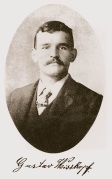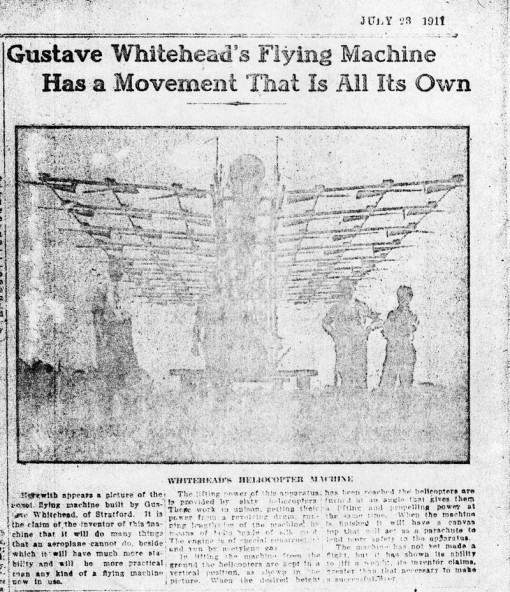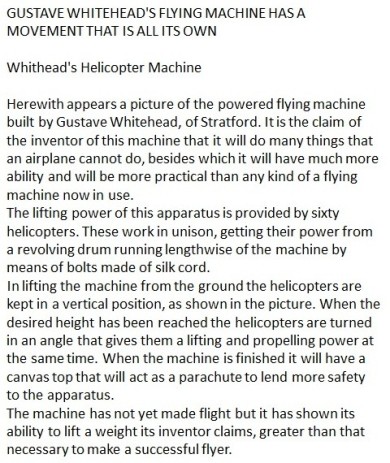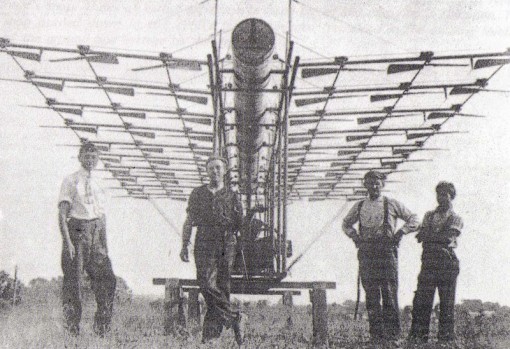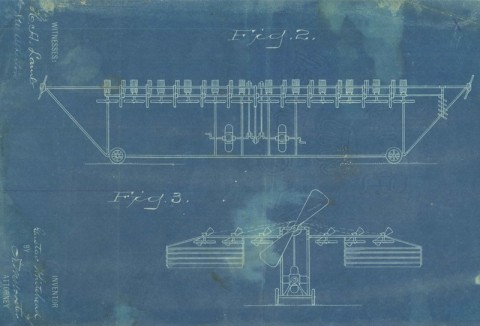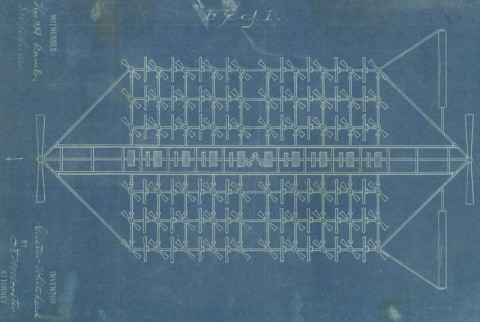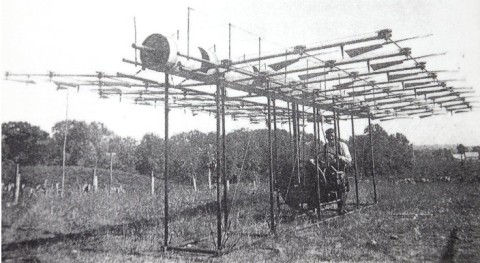AERO, August 19, 1911, p.437
Bridgeport Sunday Herald, July 23, 1911, p.18
The survival of blueprints of the helicopter illustrates that Whitehead made detailed plans of the aircraft he built (below).
The design also illustrates Whitehead's understanding of the principles of helicopter design:
a). While a large rotor minimizes induced drag at the blades' tips, it requires considerablye power to rotate it. Not having such high power available, Whitehead juggled the "power-loading" and the "disc-loading" in an effort to enable an engine of the day to perform the task;
b). his helicopter is designed to direct part of the thrust in the direction of forward flight, thus illustrating his understanding of how "aerodynamic lift" enhances "powered lift".
[Commentators with a purely historical - but no aeronautical - background have erroneously cited this helicopter as an example of wayward thinking. When a modern inventor recently developed and successfully flew a manned, electrically-powered helicopter, the "e-volo", he employed the same multi-rotor principle to enable his weak/heavy electric motors to perform the task.]

